Top 10 Popular Board Games: A Journey Through Strategy and Fun
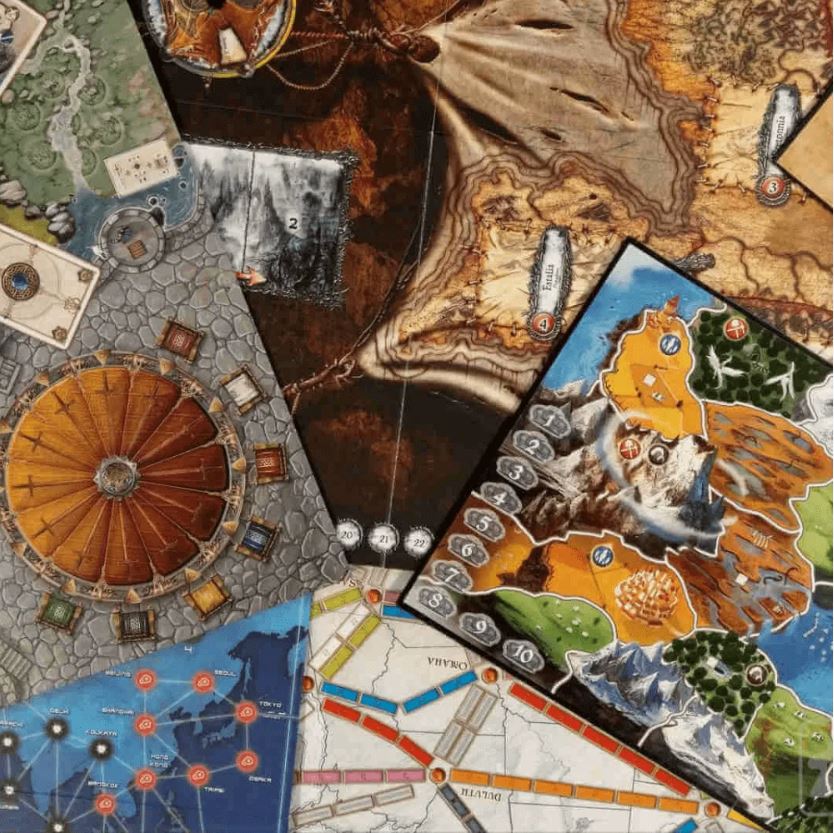

Board games have been an integral part of the entertainment industry for centuries, providing a combination of strategic thinking, elements of chance, and social interaction. From ancient civilizations to modern times, board games have undergone evolution, but their core essence remains the same – bringing people together. This article will explore the top 10 most popular board games and discuss their unique appeal and lasting impact. One of these games is Go (also known as Baduk in Korea and Weiqi in China), which stands out due to its profound strategic depth and rich cultural background.
Chess: The Game of Kings

Chess is arguably the most well-known strategy game in the world, with its origins rooted in India. Having become a global phenomenon, chess requires players to plan several moves ahead and balance offensive and defensive strategies.
Origins and Evolution
- Origins: Chess originated in ancient India around the 6th century, under the name Chaturanga. From there, it spread to neighboring regions, including Persia, where it became known as Shatranj. Eventually, it made its way to Europe, where it evolved into the game we know today.
- Spread: The game reached Europe in the 9th century and gained popularity in Spain and Italy. By the 15th century, it had developed into its modern form.
- Standardization: The standard rules were established in the 19th century, with the first modern tournament held in London in 1851.
Gameplay and Strategies
- Objective: The primary objective is to achieve checkmate on the opponent’s king, placing it in a position from which it cannot escape.
- Pieces and Moves:
- King: Moves one square in any direction.
- Queen: Moves any number of squares in any direction.
- Rook: Moves horizontally or vertically.
- Bishop: Moves diagonally.
- Knight: Moves in an L-shape, jumping over other pieces.
- Pawn: Moves forward one square, with the option to move two squares on its first move. Captures diagonally.
Key Concepts
- Opening: The initial stage of the game involves players developing their pieces and controlling the central area of the board.
- Middlegame: Involves complex tactics and strategies, aiming to gain material or positional advantages.
- Endgame: The final stage, which focuses on promoting pawns and checking the opponent’s king..
Notable Facts
- World Championships: The first official World Chess Championship was held in 1886. Wilhelm Steinitz was the first recognized World Chess Champion.
- Famous Players: Names like Garry Kasparov, Bobby Fischer, and Magnus Carlsen are legendary in the chess world.
- Computer Chess: In 1997, IBM’s Deep Blue defeated World Champion Garry Kasparov, marking a significant milestone in artificial intelligence.
Benefits of Playing Chess
- Cognitive Development: Enhances problem-solving skills and logical thinking.
- Memory Improvement: Players memorize numerous patterns and strategies.
- Patience and Discipline: Teaches the importance of careful planning and patience.
Chess continues to fascinate people worldwide with its profound strategic complexity and long history. Its development from ancient India into a globally recognized game highlights its enduring appeal and intellectual challenge. Whether played for fun or in a competitive setting, chess remains a game that fosters critical thinking and strategic planning skills.
Monopoly: The Real Estate Tycoon

Monopoly, a board game that simulates the real estate market, has been a favorite family pastime for generations. The game’s combination of luck and strategy keep players engaged as they purchase, trade, and manage properties.
A Brief History
- Inception: Monopoly was created by Charles Darrow during the Great Depression in 1935.
- Published: Initially rejected by Parker Brothers, it was later accepted and became a massive success.
- Global Reach: Over 275 million copies have been sold worldwide in 111 countries and 43 languages.
Gameplay Overview
- Objective: The main goal is to bankrupt all opponents by buying, trading, and developing properties.
- Components:
- Board: Features 40 spaces including 28 properties, 22 of which are color-coded.
- Currency: Players use Monopoly money to conduct transactions.
- Tokens: Iconic tokens include the car, thimble, boot, top hat, and dog.
- Cards: Chance and Community Chest cards add elements of surprise.
- Rules:
- Players roll dice to move around the board, purchasing properties they land on.
- If a player lands on an owned property, they must pay rent.
- Development includes the construction of houses and hotels in order to increase rental income.
- Special spaces include Jail, Free Parking, and Go to Jail.
Key Strategies
- Property Acquisition: Prioritize buying properties, especially complete color sets.
- Development: Build houses and hotels to maximize rent revenue.
- Negotiation: Trade strategically to acquire monopolies.
- Cash Management: Maintain enough cash to pay rents and avoid bankruptcy.
- Luck Factor: Use Chance and Community Chest cards to your advantage.
Notable Facts
- Popularity: Monopoly is one of the best-selling board games of all time, with over 1 billion players worldwide.
- Variants: Numerous editions including themed versions like Star Wars, Game of Thrones, and city-specific editions.
- World Records: The longest Monopoly game ever played lasted 70 days.
- Cultural Impact: Monopoly has been referenced in various movies, TV shows, and literature, making it a cultural icon.
Fun Facts
- Origin Story: The original version was intended to demonstrate the negative consequences of concentrated land ownership in private monopolies.
- Board Design: The layout of the properties on the board is based on locations in Atlantic City, New Jersey.
- Special Editions: A Braille edition is available for visually impaired players.
Monopoly’s long-lasting appeal lies in its unique combination of elements, including chance, strategic decision-making, and real estate management. This makes it a cherished game that has stood the test of time and continues to be enjoyed by people of all generations. Whether it is played casually or competitively, Monopoly brings families and friends together for hours of entertaining fun.
Settlers of Catan: Resource Management and Trade
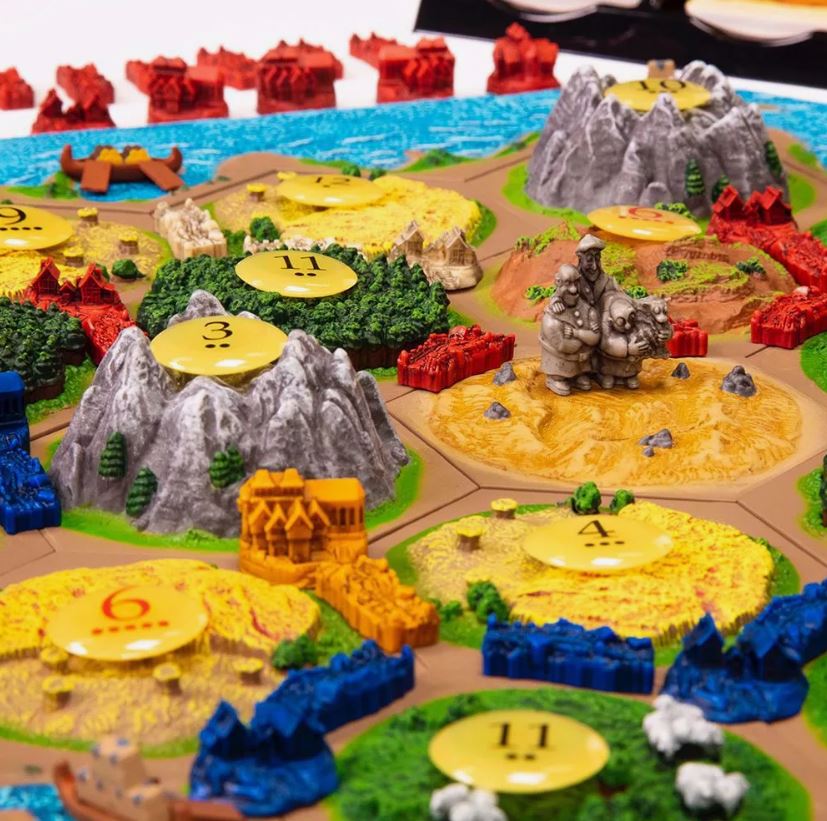
The game “Settlers of Catan” has revolutionized the board gaming industry by introducing innovative resource management and trading mechanics. In this game, players compete to establish the most successful settlements on the fictional island of Catan, utilizing various resources and trading strategies to achieve victory.
A Brief History
- Creation: Designed by Klaus Teuber, Settlers of Catan was first published in Germany in 1995.
- Awards: The game has won multiple prestigious awards, including the Spiel des Jahres (Game of the Year) in 1995.
- Popularity: Over 32 million copies have been sold worldwide, with translations into more than 30 languages.
Gameplay Overview
- Objective: The goal is to reach 10 victory points by building settlements, cities, and roads, and by acquiring development cards.
- Components:
- Board: Comprised of hexagonal tiles representing different resources.
- Resources: Includes brick, lumber, wool, grain, and ore.
- Tokens: Players use wooden pieces to represent roads, settlements, and cities.
- Cards: Development cards and resource cards are crucial for strategy.
- Rules:
- Players roll two dice to determine which resources are produced each turn.
- Resources are used to build and trade.
- Players can trade resources with each other or with the bank.
- Development cards offer various benefits, such as additional points or special abilities.
Key Strategies
- Resource Management: Balance the collection of different resources to ensure smooth development.
- Trading: Engage in strategic trading with other players to acquire needed resources.
- Settlement Placement: Place settlements in locations that maximize resource production.
- Expansion: Expand your network of roads and settlements to access more resources and control valuable areas.
- Development Cards: Use development cards strategically for unexpected advantages.
Notable Facts
- Expansions: Several expansions, such as “Seafarers” and “Cities & Knights,” add new dimensions to the game.
- Influence: Catan has had a significant impact on many modern board games due to its innovative game mechanics.
- Digital Versions: Available on multiple platforms, including mobile apps and online versions, ensuring accessibility.
Fun Facts
- Cultural Impact: Settlers of Catan has been referenced in TV shows like “The Big Bang Theory” and “Parks and Recreation.”
- Community: There are dedicated Catan conventions and tournaments, such as the Catan World Championship.
- Educational Use: The game is frequently employed in educational contexts to foster the development of resource management skills and strategic thinking abilities.
Settlers of Catan has become a seminal work in board game development, captivating players with its intricate mechanics of resource management and trading. The game’s combination of strategic thinking, interactive gameplay, and randomness ensures that each game is unique, making it a perennial favorite among gamers worldwide. Whether you are a seasoned veteran or new to the genre, Catan provides endless opportunities for entertainment and strategic challenge.
Risk: Global Domination
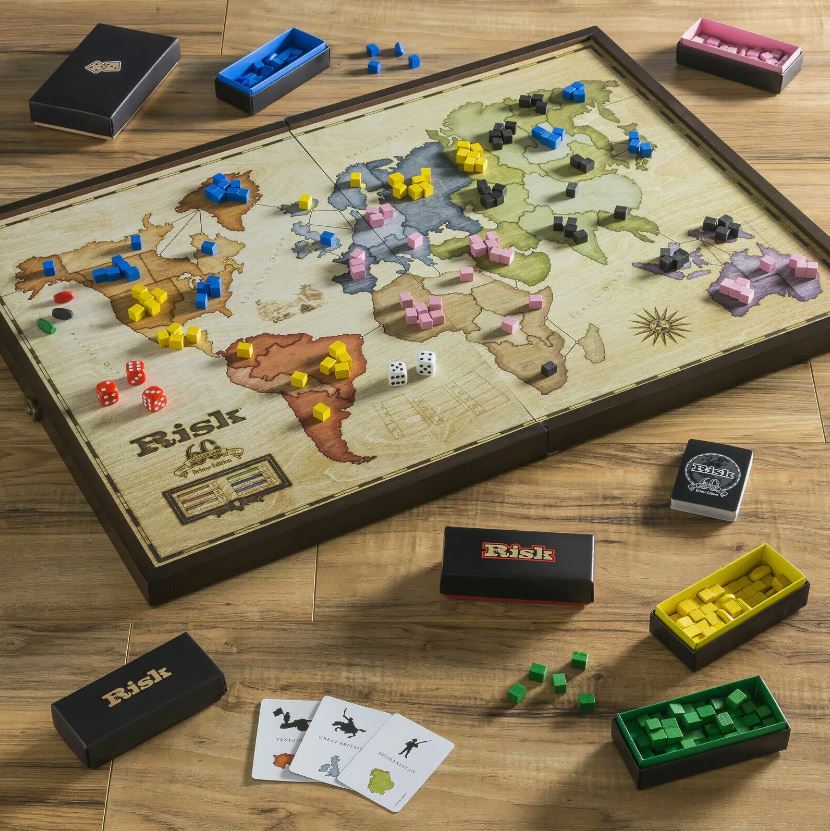
Risk, a game of strategic conquest on a global scale, challenges players to master the art of commanding armies and devise strategic plans to dominate the game board. Alliances, treachery, and tactical maneuvering create a thrilling and unpredictable experience.
A Brief History
- Creation: Risk was invented by French film director Albert Lamorisse in 1957 and was originally called “La Conquête du Monde” (The Conquest of the World).
- Publication: The game was later bought by Parker Brothers and released as Risk in 1959.
- Popularity: It quickly became a staple in board game collections worldwide, known for its complex strategy and global conquest theme.
Gameplay Overview
- Objective: The primary goal is to eliminate all opponents by capturing their territories and achieving world domination.
- Components:
- Board: A world map divided into six continents and 42 territories.
- Armies: Players use colored pieces to represent their armies.
- Cards: Territory cards, including Infantry, Cavalry, and Artillery, are used to reinforce armies.
- Dice: Used to determine the outcome of battles.
- Rules:
- Players start by placing armies on the board, aiming to control entire continents for bonus reinforcements.
- During their turn, players can deploy new armies, attack opponents, and fortify their positions.
- Attacks are resolved by rolling dice, with the higher numbers winning battles.
- The game continues until one player achieves the goal of global domination or the specific victory conditions agreed upon before starting.
Key Strategies
- Territory Control: Focus on controlling entire continents to gain reinforcement bonuses.
- Balanced Expansion: Spread out your armies to avoid being vulnerable to concentrated attacks.
- Alliances: Form temporary alliances to weaken stronger opponents, but be wary of betrayals.
- Aggressive Play: Sometimes, a bold offensive can lead to quick territorial gains.
- Defensive Tactics: Fortify key positions to make it difficult for opponents to advance.
Notable Facts
- Cultural Impact: Risk has inspired numerous variations and special editions, including Star Wars Risk and Lord of the Rings Risk.
- Tournaments: There are Risk tournaments held worldwide, showcasing the game’s strategic depth and popularity.
- Digital Versions: Available on various platforms, including mobile apps and online versions, making it accessible to a broader audience.
Fun Facts
- Longest Game: The longest game of Risk on record lasted for over 8 hours.
- Famous Fans: Celebrities like John Lennon and Seinfeld’s Jason Alexander have publicly expressed their love for the game.
- Educational Use: Risk is used in some educational settings to teach geography, strategy, and critical thinking skills.
Risk remains a timeless classic that combines strategic complexity with the excitement of global domination. Its dynamic gameplay, in which alliances may turn into betrayal and fortunes may change with a single throw of the dice, ensures that each game is unique. Whether planning your next move or engaging in negotiations with allies, Risk provides endless hours of entertaining and strategic fun.
Scrabble: The Wordsmith’s Delight

Scrabble is a game that combines vocabulary and strategic thinking, allowing players to construct words from a set of randomly distributed letter tiles. The game tests the player’s ability to both recall a wide range of words and strategically place them on the board.
A Brief History
- Inception: Scrabble was developed by Alfred Mosher Butts in 1938, initially under the name Lexiko. The name was later changed several times before settling on the current name of Scrabble.
- Publication: The game was mass-produced by James Brunot in 1948 and quickly gained popularity.
- Popularity: Over 150 million sets have been sold worldwide, and it is available in 31 languages.
Gameplay Overview
- Objective: The goal is to score the highest points by forming words on a 15×15 grid.
- Components:
- Board: A 15×15 grid with premium squares for double and triple letter and word scores.
- Tiles: 100 letter tiles, each assigned a point value.
- Tile Bag: A bag to draw tiles randomly.
- Racks: Hold seven tiles for each player.
- Rules:
- Players draw seven tiles each and form words on the board, intersecting with existing words.
- Points are scored based on letter values and premium squares.
- Players can exchange tiles or pass if they cannot form a word.
- The game ends when all tiles are drawn, and one player uses all their tiles or no more moves are possible.
Key Strategies
- Vocabulary: A strong vocabulary helps in creating high-scoring words.
- Tile Management: Efficiently manage high-value tiles like Q, X, Z, and blanks.
- Board Control: Strategically place words to block opponents from accessing premium squares.
- Word Placement: Utilize double and triple letter and word score tiles for maximum points.
- Rack Balance: Maintain a good mix of vowels and consonants on your rack.
Notable Facts
- Competitive Play: There are numerous Scrabble tournaments worldwide, including the World Scrabble Championship.
- Record-Breaking Words: The highest-scoring word in Scrabble tournament play is “caziques,” worth 392 points.
- Educational Value: Scrabble is used in educational settings to improve vocabulary and spelling skills.
Fun Facts
- Word Legality: The official Scrabble dictionary contains over 100,000 playable words.
- Cultural Impact: Scrabble has been referenced in various TV shows, movies, and books, highlighting its cultural significance.
- Variants: Numerous variants of Scrabble exist, including Super Scrabble with a larger board and more tiles, and digital versions for online play.
Scrabble is a classic game that continues to be enjoyed by players of all ages, combining the challenge of vocabulary knowledge with the strategy of board placement. The appeal of the game lies in its balance between luck and skill, creating a unique and enjoyable experience for each player. Whether played informally among friends or competitively in tournaments, Scrabble offers a delightful challenge for wordsmiths.
Ticket to Ride: The Railway Adventure
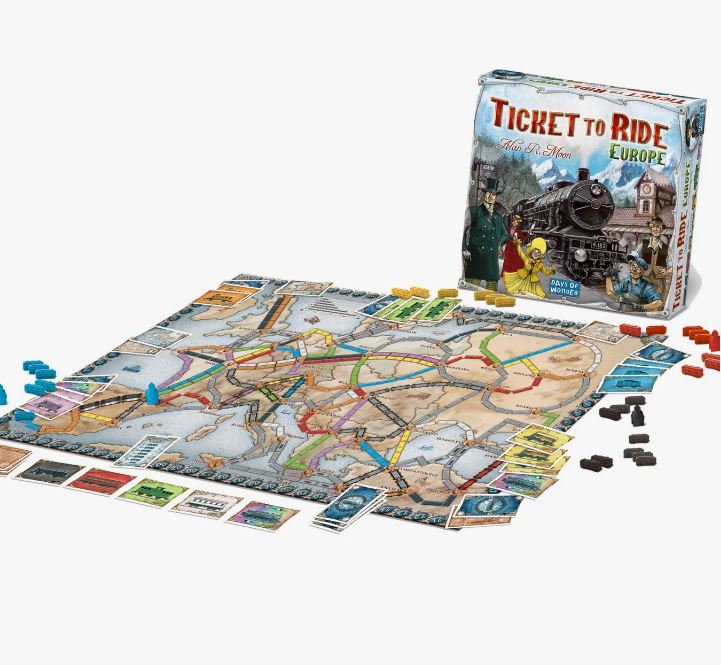
Ticket to Ride invites players to construct railway networks across various countries. Its straightforward yet captivating gameplay has made it a popular choice for family gaming sessions.
A Brief History
- Inception: Ticket to Ride was designed by Alan R. Moon and published by Days of Wonder in 2004.
- Awards: It won the prestigious Spiel des Jahres (Game of the Year) in 2004, solidifying its place in board game history.
- Popularity: The game has sold over 8 million copies worldwide and is available in multiple languages and editions.
Gameplay Overview
- Objective: The primary goal is to score the highest points by claiming railway routes between cities based on destination tickets.
- Components:
- Board: A map of a country or continent with various cities connected by potential train routes.
- Train Cards: Colored cards used to claim routes.
- Destination Tickets: Cards with specific routes that award bonus points if completed.
- Trains: Plastic train pieces used to mark claimed routes.
- Rules:
- Players draw train cards and destination tickets at the start.
- Each turn, a player can draw more train cards, claim a route by discarding matching train cards, or draw additional destination tickets.
- Points are awarded for claimed routes, completed destination tickets, and the longest continuous route.
- The game ends when a player has two or fewer train pieces left, and final scores are tallied.
Key Strategies
- Route Planning: Prioritize claiming critical routes to complete destination tickets.
- Resource Management: Balance the collection of train cards with the need to claim routes quickly.
- Blocking Opponents: Strategically claim routes that hinder opponents’ plans.
- Destination Tickets: Draw additional destination tickets if confident in completing more routes for extra points.
- Longest Route: Aim to build the longest continuous route for a significant point bonus.
Notable Facts
- Expansions and Variants: Numerous expansions like Europe, Asia, and Nordic Countries add new maps and rules, keeping the game fresh.
- Digital Versions: Ticket to Ride is available on various digital platforms, including mobile apps and online versions, making it accessible for remote play.
- Community and Events: Regular tournaments and a dedicated fan base contribute to its enduring popularity.
Fun Facts
- World Record: The largest Ticket to Ride game featured over 256 players on a single board.
- Cultural Impact: The game is credited with helping to popularize modern board gaming, bridging the gap between casual and hardcore gamers.
- Educational Value: Often used to teach geography and strategic planning in an engaging way.
Ticket to Ride’s unique combination of strategic planning, resource management, and competitive gameplay makes it a prominent title in the world of tabletop games. Its user-friendly rules and depth of strategic complexity ensure that it continues to be a favorite among both novice and experienced players. Whether playing with family around a table or connecting with friends through online platforms, Ticket to Ride provides an exciting journey across the globe’s railway networks.
Clue: Solving the Mystery
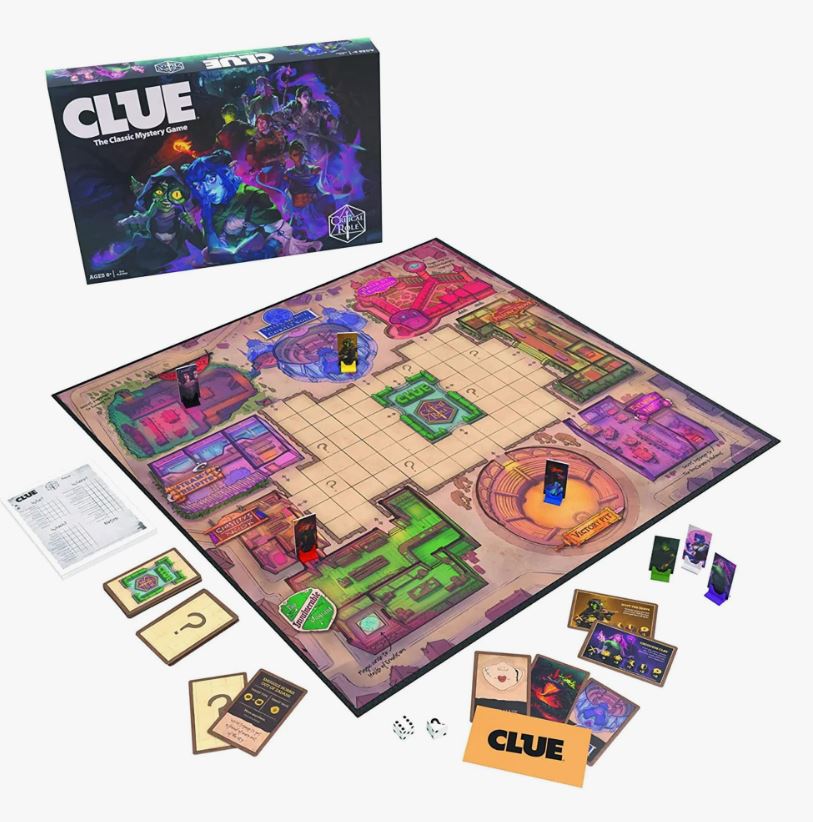
Clue, a traditional whodunnit game, challenges participants to solve a murder case. By identifying the perpetrator, weapon, and scene, participants engage in a mental battle.
A Brief History
- Creation: Clue, also known as Cluedo in certain parts of the world, was invented by Anthony E. Pratt in 1943 in the United Kingdom.
- Publication: First published by Waddingtons in the UK in 1949 and by Parker Brothers in the US the same year.
- Popularity: Over 150 million copies have been sold worldwide, making it a staple in many households.
Gameplay Overview
- Objective: The goal is to determine who committed the murder, with what weapon, and in which room.
- Components:
- Board: A mansion with nine rooms.
- Characters: Six suspects, including Miss Scarlet, Colonel Mustard, and Professor Plum.
- Weapons: Six possible murder weapons such as a candlestick, dagger, and revolver.
- Cards: Character, weapon, and room cards used for clues.
- Envelopes: A confidential case file envelope containing the solution.
- Rules:
- Players roll dice to move around the board, entering rooms to make suggestions.
- When a player makes a suggestion, other players must disprove it if they can.
- Players use deduction to keep track of clues and eliminate possibilities.
- Once a player feels confident, they can make an accusation. If correct, they win; if incorrect, they are out of the game.
Key Strategies
- Note-taking: Keep detailed notes to track the cards shown by other players.
- Room Movement: Move efficiently around the board to access rooms quickly.
- Bluffing: Use suggestions to mislead opponents about what you know.
- Quick Deduction: Narrow down possibilities as quickly as possible to make an early accurate accusation.
- Observation: Pay attention to other players’ suggestions and reactions.
Notable Facts
- Variations: Numerous themed versions exist, including Harry Potter Clue and Clue: The Walking Dead.
- Adaptations: Clue has been adapted into a movie, TV series, and stage play, showcasing its cultural impact.
- Educational Use: Often used to teach logic, deductive reasoning, and critical thinking skills.
Fun Facts
- World Record: The largest game of Clue involved over 1,000 participants.
- Famous Fans: The game has been a favorite of many celebrities, including Stephen King.
- Name Origin: The name “Cluedo” is a combination of “Clue” and “Ludo,” which means “I play” in Latin.
The enduring appeal of Clue lies in its unique blend of mystery, deduction, and strategic gameplay. Whether players are solving the mystery with friends or family, the game offers a captivating and challenging experience that tests their intellect and keeps them engaged.
The timeless charm of Clue, coupled with its numerous adaptations, ensures that it will continue to be a beloved classic game, providing endless entertainment and mental stimulation for players.
Carcassonne: Building a Medieval Landscape
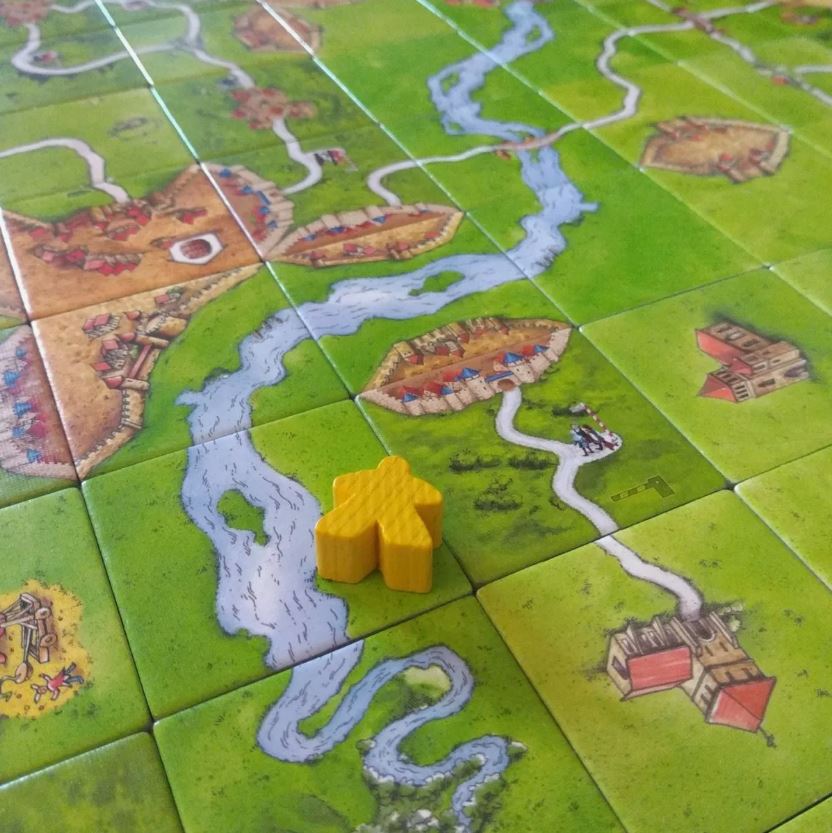
Carcassonne, derived from the name of a French town, is a game that involves placing tiles on a board to create a simulated medieval landscape. Players earn points by constructing cities, roads, and other features within the game board.
A Brief History
- Creation: Carcassonne was designed by Klaus-Jürgen Wrede and first published in 2000 by Hans im Glück in Germany.
- Awards: It won the Spiel des Jahres (Game of the Year) award in 2001, propelling it to international fame.
- Popularity: Over 10 million copies have been sold, with numerous expansions and editions available.
Gameplay Overview
- Objective: The goal is to score the most points by strategically placing tiles and followers (meeples) to complete various features on the landscape.
- Components:
- Tiles: 72 land tiles depicting cities, roads, cloisters, and fields.
- Meeples: Each player has a set of followers used to claim features.
- Scoreboard: Tracks players’ scores throughout the game.
- Rules:
- Players draw and place tiles one by one to extend the landscape.
- After placing a tile, players can place a meeple on a feature (city, road, cloister, or field) on that tile to claim it.
- Points are scored when features are completed:
- Cities are worth 2 points per tile.
- Roads are worth 1 point per tile.
- Cloisters are worth 9 points when surrounded by 8 tiles.
- Fields score 3 points per completed city they border at the end of the game.
- The game ends when all tiles are placed, and final scores are tallied.
Key Strategies
- Tile Placement: Place tiles to extend your own features and complete them for points.
- Meeple Management: Use meeples wisely; they are limited and only returned when features are completed.
- Blocking Opponents: Strategically place tiles to block opponents from completing their features.
- Field Strategy: Place farmers (meeples in fields) strategically to score big at the end of the game.
- Expansion Use: Utilize expansions to add depth and variety to the game.
Notable Facts
- Expansions: Popular expansions include “Inns & Cathedrals,” “Traders & Builders,” and “The Princess & The Dragon,” each adding new tiles and rules.
- Digital Versions: Carcassonne is available on various digital platforms, including apps and online versions, making it accessible for remote play.
- Cultural Impact: Inspired by the fortified town of Carcassonne in France, the game is renowned for its simplicity and strategic depth.
Fun Facts
- World Record: The largest Carcassonne game involved 1,300 tiles and over 100 participants.
- Game Variants: Carcassonne has inspired several spin-offs, including “Carcassonne: Hunters and Gatherers” and “Carcassonne: South Seas.”
- Educational Use: The game is used in educational settings to teach spatial awareness, strategic thinking, and basic arithmetic.
Carcassonne’s combination of simple rules and in-depth strategic gameplay has made it a popular choice among board game enthusiasts of all ages. The engaging gameplay, in which each tile placement has the potential to alter the landscape and strategic approach, ensures that every game is unique. Whether played with family or competitively, Carcassonne provides a captivating journey through a medieval setting, involving the construction and acquisition of features in order to achieve victory.
Pandemic: Cooperative Crisis Management
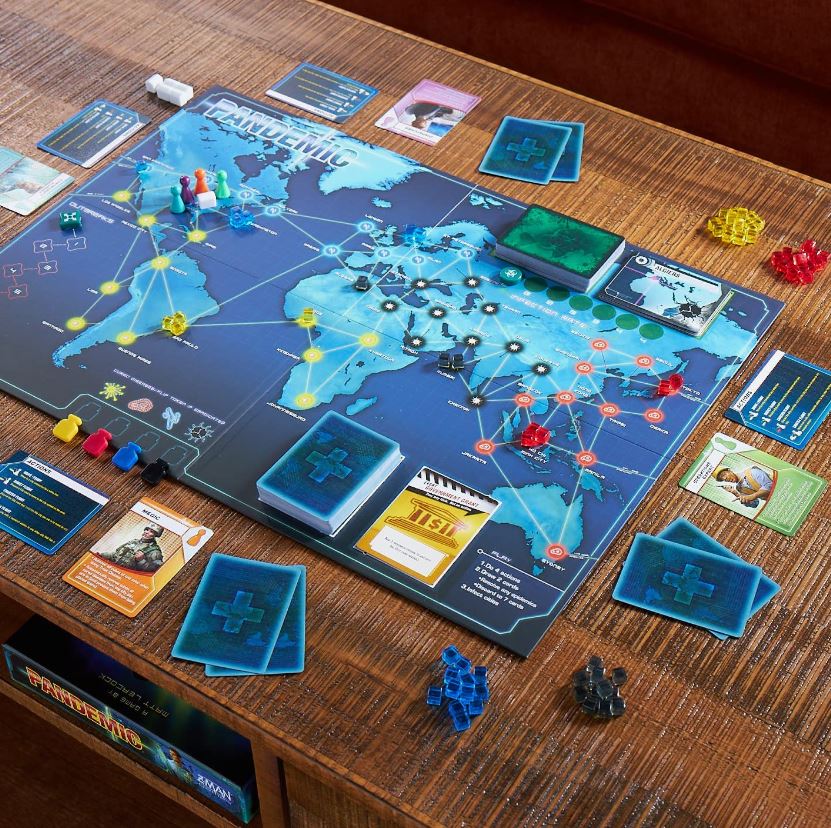
Pandemic is a cooperative game that requires players to work together in order to prevent global disease outbreaks. The game emphasizes strategic planning and cooperation among players.
A Brief History
- Creation: Designed by Matt Leacock, Pandemic was first published by Z-Man Games in 2008.
- Awards: It has won several awards, including the 2009 Golden Geek Board Game of the Year.
- Popularity: Pandemic is renowned for its innovative gameplay, having sold millions of copies worldwide and spawning numerous expansions and spin-offs.
Gameplay Overview
- Objective: The goal is to work as a team to stop the spread of four deadly diseases and find cures before the diseases overwhelm the world.
- Components:
- Board: A world map with major cities interconnected by travel routes.
- Player Roles: Each player assumes a unique role, such as the Medic, Scientist, or Operations Expert, each with special abilities.
- Disease Cubes: Represent the spread of four diseases.
- Cards: Include player cards, infection cards, and event cards.
- Research Stations: Facilitate the discovery of cures.
- Rules:
- Players take turns performing actions such as traveling between cities, treating infections, sharing knowledge, and finding cures.
- Each turn ends with drawing player cards and infection cards, which spread the diseases.
- Players must manage outbreaks, prevent cities from becoming overrun, and find cures for all four diseases to win.
- The game ends in defeat if there are too many outbreaks, a disease spreads uncontrollably, or the player deck runs out.
Key Strategies
- Role Utilization: Leverage each player’s role to maximize efficiency and strategic advantage.
- Cure Priority: Focus on finding cures quickly to control the spread of diseases.
- Balanced Movement: Ensure team members are spread out to cover more ground and react to outbreaks efficiently.
- Card Management: Use event cards wisely to mitigate crises and accelerate finding cures.
- Coordination: Communicate and plan together to handle multiple threats simultaneously.
Notable Facts
- Expansions: Popular expansions include “Pandemic: On the Brink,” “Pandemic: In the Lab,” and “Pandemic: Legacy,” which introduce new challenges and gameplay mechanics.
- Digital Versions: Available on multiple platforms, including mobile apps and online versions, enhancing accessibility and remote play.
- Educational Value: Often used in educational settings to teach teamwork, strategic planning, and crisis management.
Fun Facts
- Inspirational Source: Matt Leacock designed Pandemic inspired by real-world disease outbreaks and the need for global cooperation.
- Legacy Editions: Pandemic Legacy introduces a campaign mode where each game session permanently changes future games, adding depth and continuity.
- Global Popularity: Pandemic’s cooperative nature has made it a favorite for family game nights and team-building exercises worldwide.
The cooperative gameplay and strategic depth of Pandemic make it a notable addition to the world of board games. The engaging mechanics and focus on teamwork create a unique experience in which players must collaborate to overcome global challenges. Whether playing the base game or exploring the many expansions, Pandemic provides an immersive and demanding adventure that tests the strategic planning and collaborative skills of players.
Go (Baduk, Weiqi): The Ancient Strategy Game
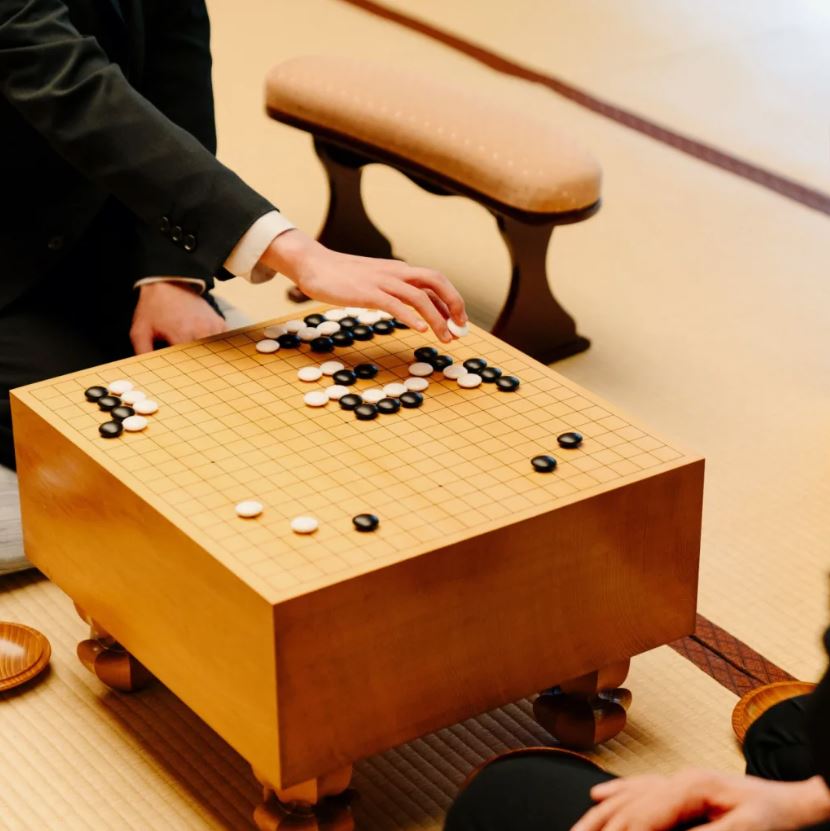
Go, also known as Baduk in Korea and Weiqi in China, is one of the oldest board games that is still played today. The game has a history of over 2,500 years and originated in China. It has significant cultural importance and is renowned for its complex strategic elements.
A Brief History
- Origins: Go is believed to have been invented in China around 500 BC. The game was used by scholars to develop strategic thinking and concentration.
- Spread: It spread to Japan and Korea, where it was refined and integrated into the cultures as Baduk and Weiqi, respectively.
- Modern Play: Go is played by millions worldwide, with a strong presence in East Asia and growing popularity in the West.
Gameplay Overview
- Objective: The goal is to control the largest area on the board by placing stones on a 19×19 grid.
- Components:
- Board: Typically a wooden board with a 19×19 grid.
- Stones: Black and white stones used by players to claim territory.
- Rules:
- Players take turns placing stones on empty intersections.
- Stones remain on the board unless captured by surrounding them completely.
- The game ends when both players agree there are no more beneficial moves, and the territory is counted to determine the winner.
Key Strategies
- Territory Control: Focus on claiming and defending larger areas of the board.
- Influence and Balance: Balance between attacking and defending to maintain influence over key areas.
- Reading Ahead: Anticipate the opponent’s moves and plan multiple steps ahead.
- Shape and Efficiency: Form efficient shapes with your stones to maximize control and minimize weaknesses.
Cultural Significance
- Intellectual Pursuit: Go has been associated with intellectual and strategic prowess, often compared to chess in the West.
- Philosophical Depth: The game embodies philosophical concepts of balance and harmony, reflecting East Asian cultural values.
- Competitive Scene: There are professional Go leagues in China, Japan, and Korea, with major tournaments attracting significant attention.
Resources for Learning and Improvement
To delve deeper into the game of Go, you can explore a wealth of resources available online:
- How to Play Go: Learn the basics and rules of Go here.
- Go Problems: Solve problems to increase your level of play here.
- Video Courses: Access interactive video courses for players of all levels here.
Go continues to be a lasting symbol of strategic depth and cultural legacy. Whether you are a novice or experienced player, the game provides endless opportunities for learning and improvement. Discover the ancient game of Go and join the millions of enthusiasts who celebrate its rich history and intellectual challenge. Explore more and enhance your skills through resources from GoMagic, a platform dedicated to promoting Go education and advancement.
Why Go is Timeless
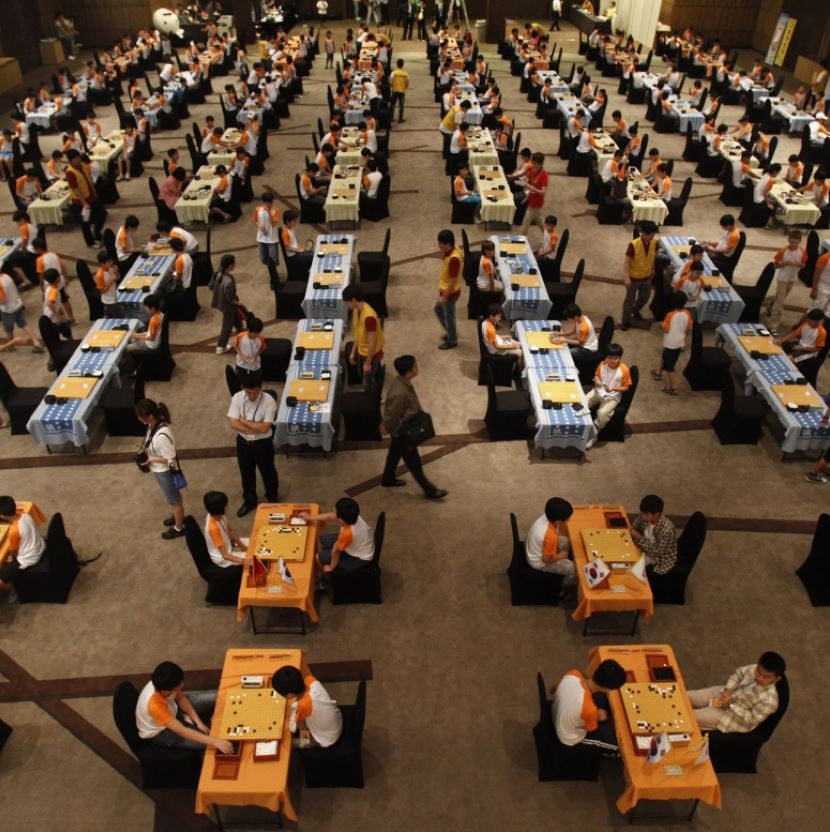
The enduring appeal of Go lies in its timeless elegance and infinite complexity. Scholars and enthusiasts alike have studied and admired the game, with numerous professional competitions held worldwide. Its cultural significance, particularly in East Asia, emphasizes its importance beyond mere entertainment.
Elegance and Complexity
- Simple Rules, Deep Strategy: The rules of Go are remarkably simple – players alternately place black and white stones on a 19 x 19 grid, aiming to control as much territory as possible. However, the strategic depth of the game is profound, with countless potential moves and outcomes.
- Endless Variation: Despite the simplicity of its mechanics, no two games of Go are ever identical. The vast number of potential board configurations ensures that every game is a unique experience.
Cultural Heritage
- Historical Significance: Originating over 2,500 years ago in ancient China, Go has been one of the longest-standing board games, with a rich history that has significantly impacted East Asian culture, philosophy, and literary tradition.
- Philosophical Insights: Go is more than just a game. It is seen as a representation of the complexity of life. The concepts of balance, harmony, and strategic thinking that are inherent in the game of Go are in line with East Asian philosophical traditions such as Taoism and Confucianism.
- Educational Tool: Historically, the game of Go has been used to promote the development of strategic thinking, patience, and mental discipline. Today, it continues to be a valuable educational resource, helping to enhance cognitive skills and improve concentration.
Professional Scene
- Tournaments and Leagues: Professional Go tournaments are significant events in countries such as China, Japan, and Korea. The International Go Federation organizes global competitions, attracting top players from all over the world.
- Prominent Players: Legendary figures like Honinbo Shusaku, Go Seigen, and more recently, Ke Jie and Lee Sedol, have become cultural icons, showcasing the highest levels of strategic mastery.
Global Appeal
- Growing Popularity: While Go has a well-established presence in East Asia, it is experiencing increasing global popularity. The emergence of online Go platforms and international competitions has made the game accessible to new players.
- AI and Go: The development of artificial intelligence (AI), particularly through programs such as AlphaGo, has sparked renewed interest in the game of Go. AlphaGo’s victory over some of the world’s top human players has highlighted both the complexity of the game and the potential of AI for strategic thinking.
Fun Facts
- Historic Milestone: The first recorded game of Go can be traced back more than 2,500 years, making it one of the oldest known board games.
- Philosophical Depth: Many consider Go to be a metaphor for the balance and complexity of life, often imparting valuable lessons beyond the confines of the game itself.
- AI Breakthrough: In 2016, AlphaGo, a product developed by DeepMind, achieved a significant milestone by defeating world champion Lee Sedol in a game of Go, demonstrating the advanced strategic capabilities of AI.
The timeless appeal of Go lies in its combination of simplicity and complexity, making it an engaging activity for both beginners and experts. Its rich cultural history and strategic depth continue to captivate players around the world, ensuring its status as a respected classic. To learn more about this fascinating game and improve your skills, explore resources available on GoMagic, a platform dedicated to promoting Go education and enhancement. Learn the rules here, solve problems here, and access interactive courses here.
Conclusion
Board games offer a unique combination of challenge and entertainment, spanning generations and cultures. From the strategic battles of chess and risk, to the economic strategies in Monopoly and Catan, and the profound complexity of Go, these games provide countless hours of fun and intellectual stimulation. As you delve into these top 10 most popular board games, you will discover not just games, but enduring traditions that unite us all.

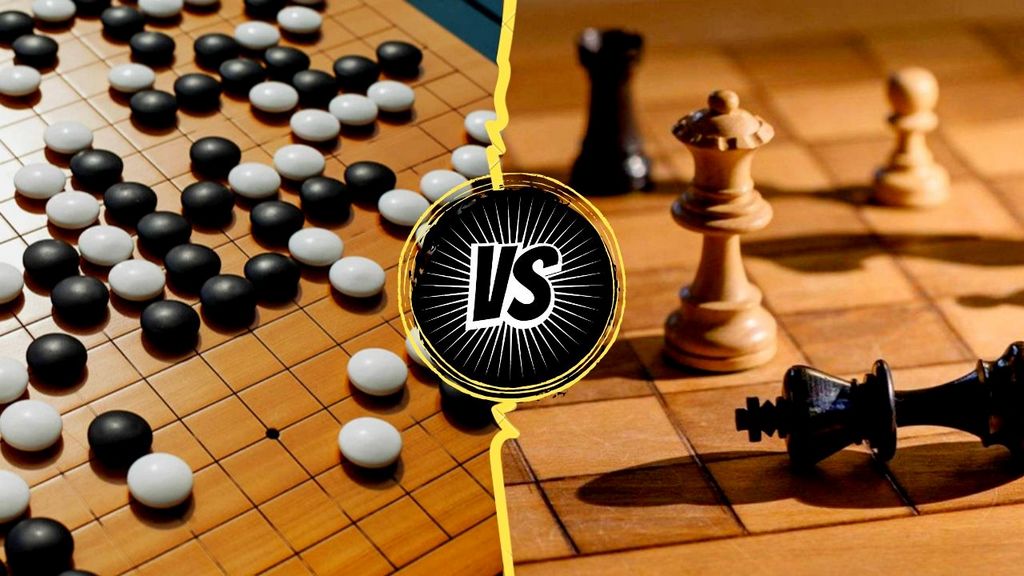



Leave a comment